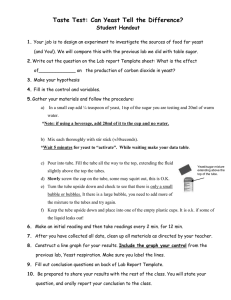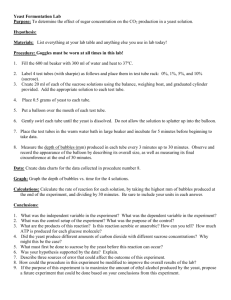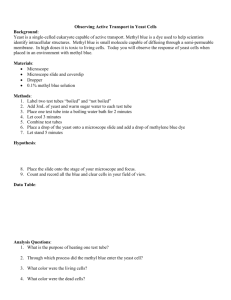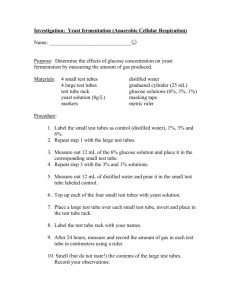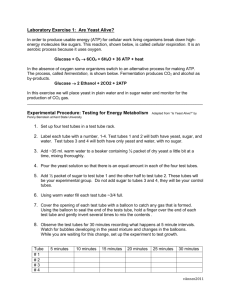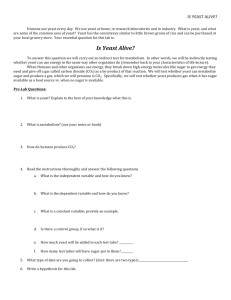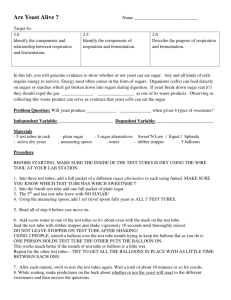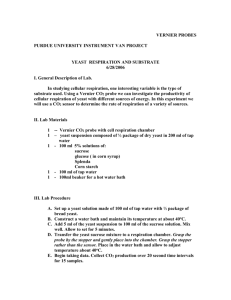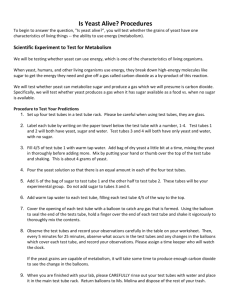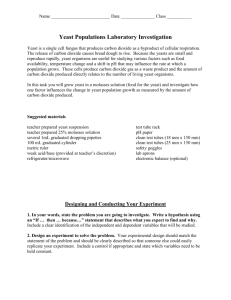Yeast Respiration Planning Worksheet
advertisement
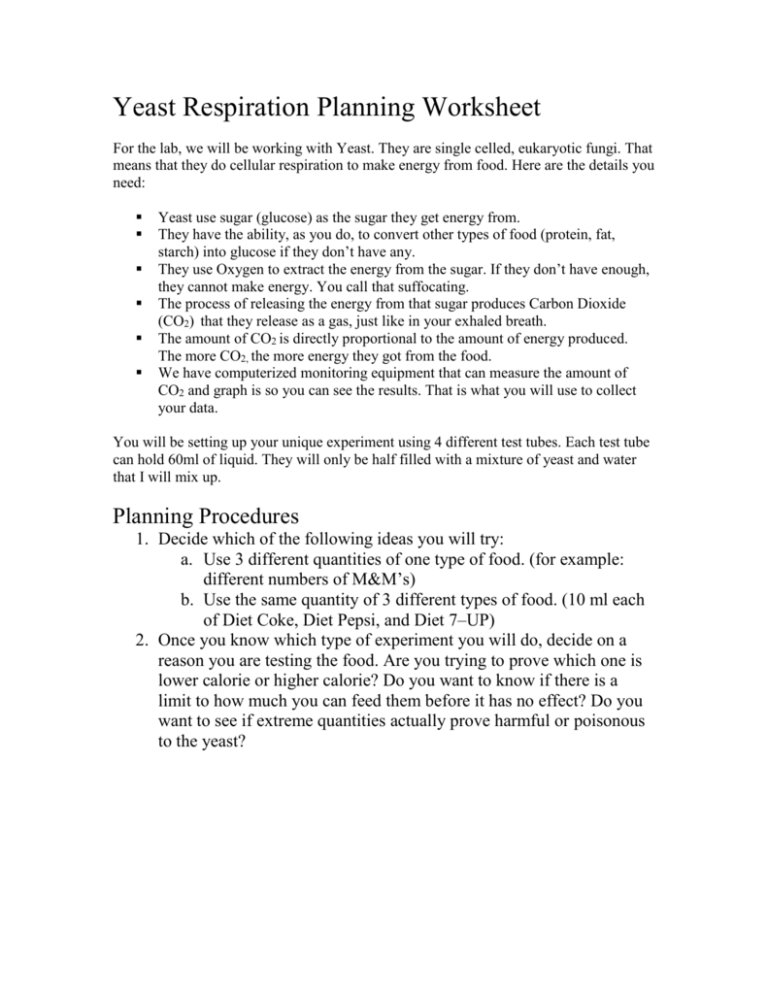
Yeast Respiration Planning Worksheet For the lab, we will be working with Yeast. They are single celled, eukaryotic fungi. That means that they do cellular respiration to make energy from food. Here are the details you need: Yeast use sugar (glucose) as the sugar they get energy from. They have the ability, as you do, to convert other types of food (protein, fat, starch) into glucose if they don’t have any. They use Oxygen to extract the energy from the sugar. If they don’t have enough, they cannot make energy. You call that suffocating. The process of releasing the energy from that sugar produces Carbon Dioxide (CO2) that they release as a gas, just like in your exhaled breath. The amount of CO2 is directly proportional to the amount of energy produced. The more CO2, the more energy they got from the food. We have computerized monitoring equipment that can measure the amount of CO2 and graph is so you can see the results. That is what you will use to collect your data. You will be setting up your unique experiment using 4 different test tubes. Each test tube can hold 60ml of liquid. They will only be half filled with a mixture of yeast and water that I will mix up. Planning Procedures 1. Decide which of the following ideas you will try: a. Use 3 different quantities of one type of food. (for example: different numbers of M&M’s) b. Use the same quantity of 3 different types of food. (10 ml each of Diet Coke, Diet Pepsi, and Diet 7–UP) 2. Once you know which type of experiment you will do, decide on a reason you are testing the food. Are you trying to prove which one is lower calorie or higher calorie? Do you want to know if there is a limit to how much you can feed them before it has no effect? Do you want to see if extreme quantities actually prove harmful or poisonous to the yeast? There are a few limits to what you can use, and how much you can use. You can bring in any type of food, drink, vitamin or over the counter supplement or medication. You may not use any illegal, controlled or prescription drugs or chemicals. You may add no more than 10 ml of food to each tube. More could make it possibly overflow. Choose only foods that can be mixed with water. Oils and meats are not good because the yeast cannot chew them up fast enough to do any good. If you want to use foods that are solids, plan on how you will grind them up before mixing them in water. I have a blender, different grinding equipment, and all of the other materials. You just supply the food. 3. In the table below, write in what you plan on adding to the 3 experimental tubes. Include the amount if you are using 3 quantities of the same food. Remember, no more than 10 ml. Tube # Group 1 Control Group Experimental Group 30 ml yeast/water + No additional food. 3 Experimental Group 30 ml yeast/water + 4 Experimental Group 30 ml yeast/water + 2 Contents 30 ml yeast/water + 4. Now, tell me what your hypothesis is for this experiment. What do you expect will happen? How much energy do you expect that each tube will produce compared to the Control, which contains no food at all? 5. Finally, sketch a graph of what you expect the results to look like. I have included the line for what the Control group will probably look like. Draw in and label a line for each of your 3 experimental tubes to show me how much energy the yeast will get from your 3 food tubes. E N E R G Y Control TIME (minutes)
